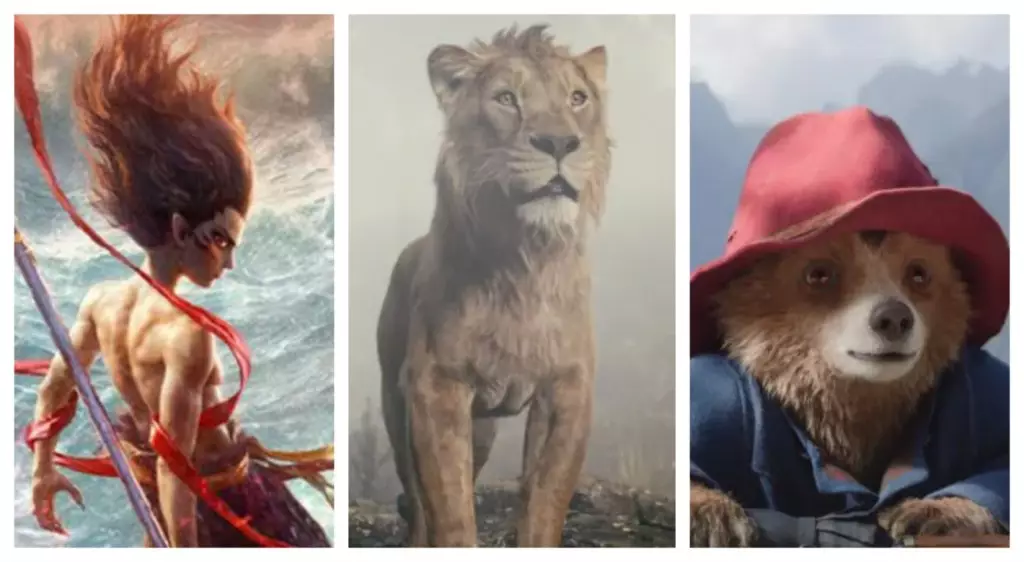In a groundbreaking achievement that has reverberated through the international film community, the animated sequel “Ne Zha 2” has become the first film to ever gross $1 billion in a single market. This milestone marks a significant turning point not only for Chinese cinema but also for the global film industry, showcasing the increasing dominance of Asian markets. As of recent estimates, “Ne Zha 2” has thrived in the Chinese theatrical landscape, reaching approximately RMB 8 billion, which equates to around $1.1 billion. The film’s exceptional performance has catapulted it into the position of the seventh highest-grossing animated film of all time, a remarkable feat for a sequel to a beloved original.
Projections released by Maoyan, a leading Chinese ticketing platform, suggest that “Ne Zha 2” is on course to achieve an unprecedented total of RMB 12 billion, or roughly $1.65 billion. If this forecast holds true, it would position the sequel as the second highest-grossing animated film globally and the eleventh highest-grossing film overall. Such numbers are noteworthy not only because of their scale, but also because they highlight the film’s potential to challenge the established animated blockbusters in the Western market without any substantial contributions from international ticket sales until its upcoming rollout across territories like the U.S.
Part of what has driven “Ne Zha 2” to its extraordinary heights is the film’s innovative use of technology in its animation. As studios worldwide strive to keep pace with evolving audience expectations, the competition is fierce. Films that merge compelling storytelling with cutting-edge visuals tend to resonate better with viewers, and “Ne Zha 2” excels on both fronts. The use of IMAX technology has further amplified its appeal, as evidenced by its staggering $63.9 million in IMAX revenue — establishing a new record for local language releases. Such advancements in viewing technology create an immersive experience that captivates audiences, ultimately driving box office success.
As film distribution strategies evolve, it’s clear that localized storytelling paired with innovative presentation methods is becoming a winning formula. The success of “Ne Zha 2” sends a clear message to Hollywood: the global film landscape is changing, and filmmakers must adapt accordingly.
While “Ne Zha 2” dominates the box office, the international animated film market is witnessing considerable movement as well. Disney’s “Mufasa: The Lion King” has continued its stronghold, adding $8.5 million to its international gross, which now stands at $435.9 million. The movie has found solid footing in several key markets, effectively demonstrating that well-established franchises still maintain their strength. The contrasting trajectories of these two films signal a diversifying market where both original stories and franchises command audience attention.
Furthermore, other films like “Paddington,” which is getting ready to debut in North America, have shown substantial overseas returns, crossing the $100 million mark. Such outcomes illustrate the expansive reach of animated films beyond domestic boundaries, emphasizing a collective appetite for engaging narratives that connect with diverse cultures.
The Future of Animated Features: A Mixed Bag
As the animated film sector continues to expand—both in terms of revenue and creative output—the upcoming landscape remains uncertain. The theatrical debut of major titles like Disney/Marvel’s “Captain America: Brave New World” will be instrumental in shaping the upcoming months, potentially altering the dynamics of box office competition. Meanwhile, animation studios also face a challenge in keeping the freshness of their content alive, with audiences constantly demanding innovative stories and character experiences.
Ultimately, films such as “Ne Zha 2” not only redefine market expectations but also challenge the stereotypes of animation being solely a children’s domain. The increasing profitability and critical acclaim of animated features across the globe mark a new chapter in cinematic storytelling—one where cultural narratives from diverse corners of the world can find footing and thrive, creating an exciting future for both filmmakers and audiences alike.

